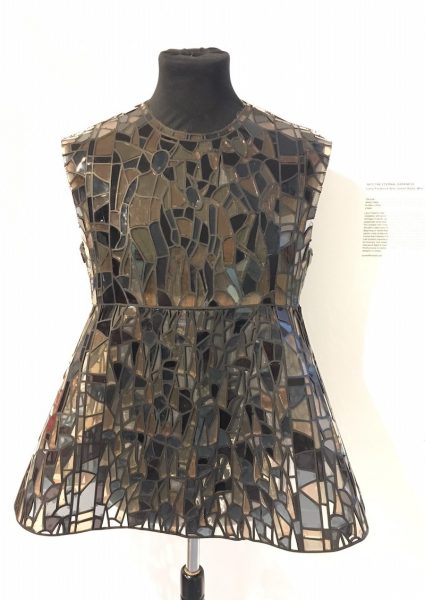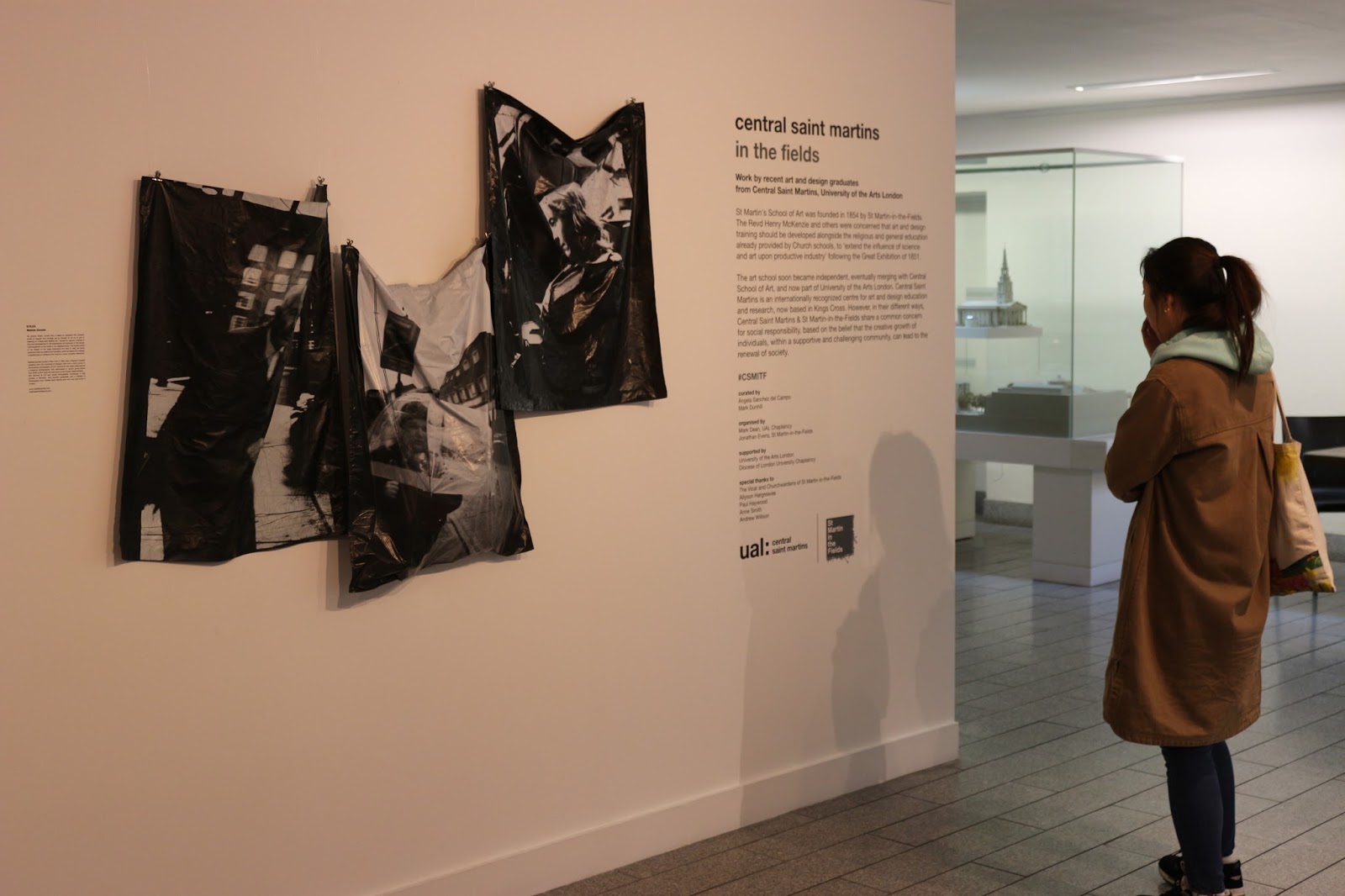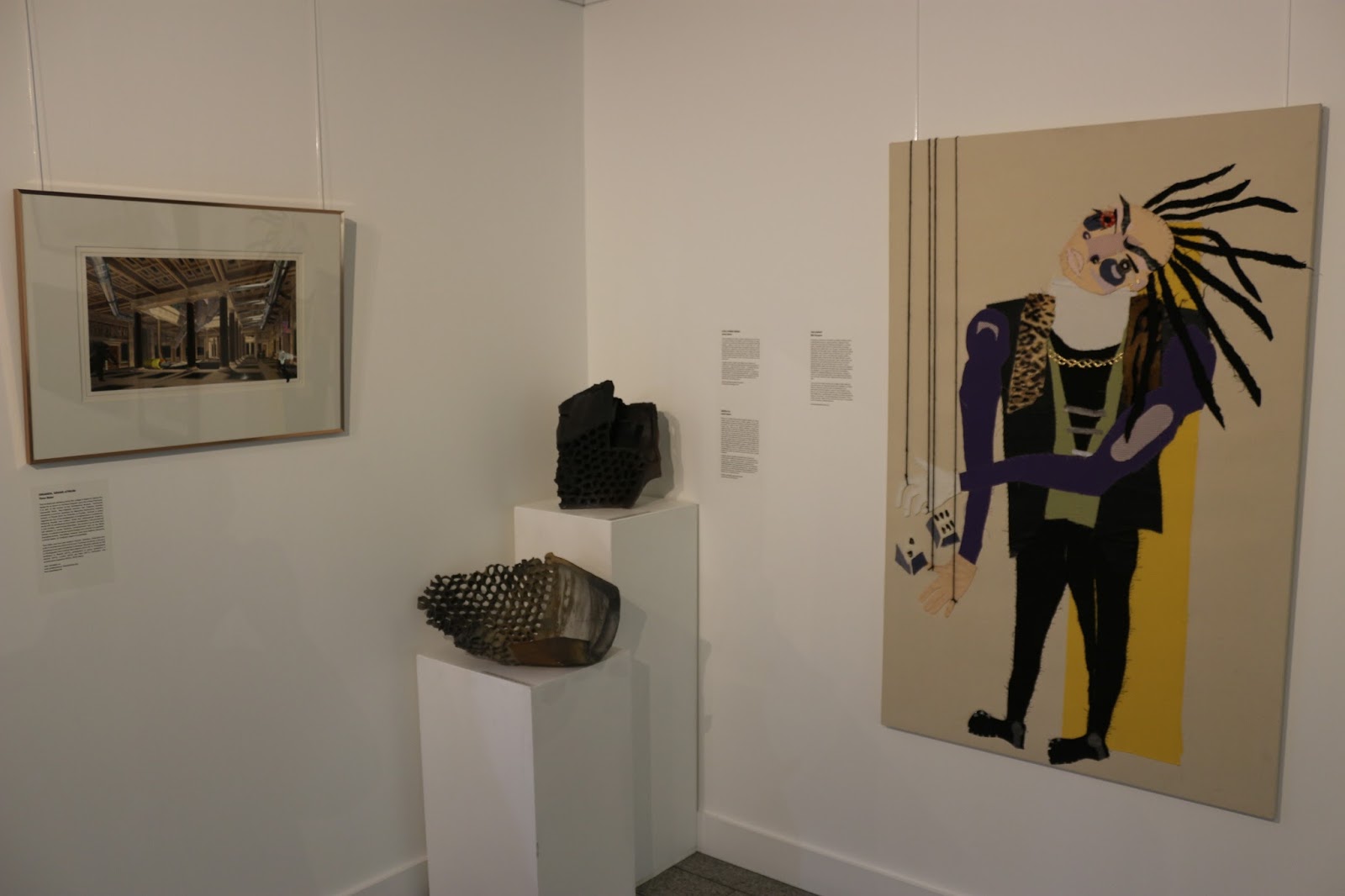Jonathan Evens writes about Central Saint Martins
Central Saint Martins
by Jonathan Evens
Why would Central Saint Martins, a world-famous arts and design college and part of University of the Arts London, choose to show work by its graduates in a church? It’s a question with several different answers all of which coalesce around an exhibition entitled central saint martin in the fields held at St Martin-in-the-Fields in October 2017.
There are historical links between the two institutions, as Central Saint Martins comes from two art and design schools, Saint Martin’s School of Art, established in 1854, and the Central School of Art, founded 1896. Both Saint Martin’s School of Art and the Central School became focus points in the 20th century for radical practice across the visual arts. In 1989 the two merged to become Central Saint Martins. St Martin's School of Art was established by St Martin-in-the-Fields as The Revd Henry McKenzie and others were concerned that art and design training should be developed alongside the religious and general education already provided by Church schools, to ‘extend the influence of science and art upon productive industry’ following the Great Exhibition of 1851.
In addition St Martin-in-the-Fields is a church, which has both a collection of historic memorials and art installations by contemporary artists. A 15-year programme of commissions and loans at St Martin-in-the-Fields began as part of the renewal of the church undertaken by Eric Parry Architects. Modus Operandi Art Consultants were appointed to create an Art Strategy for the Grade I listed church and, through a competitive interview process, overseen by an Art Selection Panel chaired by Sir Nicholas Goodison, a series of major new artworks were in the recent past commissioned from artists such as Tomoaki Suzuki, Shirazeh Houshiary and Pip Horne, Brian Catling and Giampaolo Babetto. St Martin’s also hosts art exhibitions curated by charitable and cultural organisations with its foyer, gallery and courtyard providing a backdrop for these organisations to share their vision with visitors to St Martin’s.
These factors provided a positive context for engagement by both institutions, a realisation that grew from discussions between Mark Dean, the Anglican Chaplain and Interfaith Advisor for University of the Arts London based at Camberwell, Central Saint Martins, Chelsea and Wimbledon colleges, and myself. Mark also assists at various churches in London and is an advisory member of the Diocesan Creative Network. In his ongoing work as an artist he works with appropriated film and music to produce looped video and sound works.
Our initial conversations about faith and art morphed into discussion of two semi-developed projects with which he was engaged: a video and dance project of Stations of the Resurrection for St Pauls Cathedral and a Diocesan exhibition involving Chelsea MA curating students. On the basis of these conversations Mark’s Stations project was expanded to link Stations of the Cross at St Stephen Walbrook with Stations of the Resurrection at St Pauls Cathedral, which enabled a fuller realisation of his vision through a multiplicity of connections between the films, performances and architectural contexts involved.
Similarly, by relocating the exhibition proposal to St Martin-in-the-Fields and involving Central Saint Martins, a greater sense of connection could be made based on the foundation of the historic link between the two. As a result, central saint martins in the fields could demonstrate the common concerns between an internationally recognized centre for art and design education and research and a church that actively engages with contemporary art in its commissioning and mission.
Angela Sanchez del Campo (a graduate of the MA curating course at Chelsea College of Art) and Mark Dunhill (Dean of Academic Programming at Central Saint Martins) agreed to curate the exhibition and a brief was prepared for Central Saint Martins’ graduates focusing on the historic interest in design education and stating that the exhibition intended to pay tribute to the artists and designers who are part of the college and show the new tends and research by the students.
Work by ten artists and designers was selected for a show that, without seeking to explicitly reference the celebration of belief that is central to St Martin-in-the-Fields, would nevertheless reference the shared concern that both these institutions have for social responsibility, creative growth, supportive and challenging communities, and renewal of society.

Into the Darkness by Larry Frederick Alan & James Bizby Weir
Planning an exhibition within a public space with multiple uses and significant space constraints was a significant logistical challenge for the curators. Detailed creative conversations with St Martin’s staff enabled the resolution of the practical challenges thrown up by the display space and also enabled a greater understanding of the context and ways in which the show could fit with and complement that context.
The result was an exhibition of exceptional variety and interest that provided a useful platform for recent graduates and was a positive experience for the artists and designers themselves. The show revived links between the two institutions, creating scope for a relationship that can grow by building on the historical connections combined with the foundations built through the planning of this exhibition.
For this exhibition Central Saint Martins returned to one of its roots, St Martin-in-the-Fields, discovering that, over 150 years later, our shared connection remains belief in the power of creativity as a catalyst for change in both individuals and the wider community.
*******
Jonathan Evens is Associate Vicar, Partnership Development at St Martin-in-the-Fields, London, England. A keen blogger, he posts regularly on issues of faith and culture at http://joninbetween.blogspot.co.uk. His journalism and art criticism ranges from Pugin to U2 and has appeared in a range of publications, including Artlyst and Church Times. He runs a visual arts organisation called commission4mission, which encourages churches to commission contemporary art and, together with the artist Henry Shelton, has published two collections of meditations and images on Christ's Passion. Together with the musician Peter Banks, he has published a book on faith and music entitled ‘The Secret Chord’.








